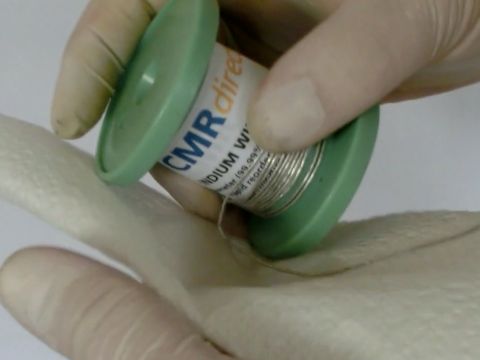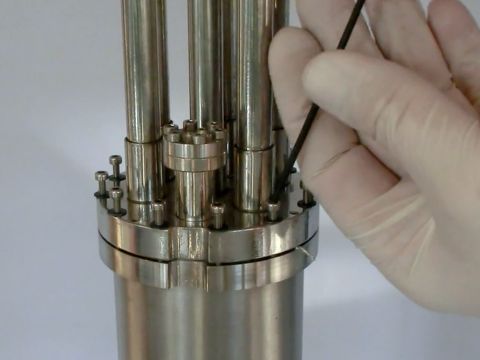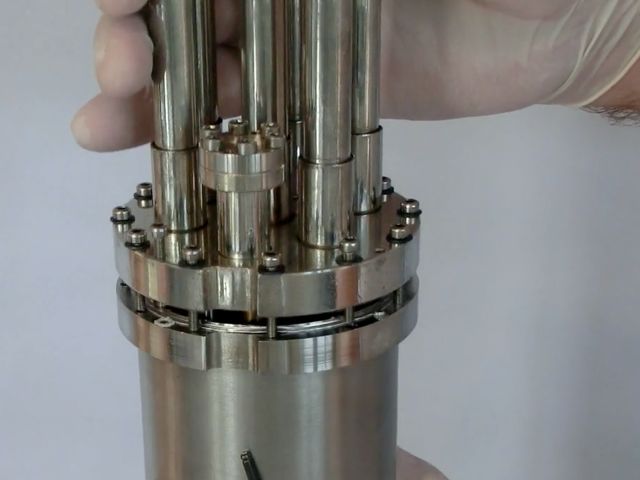How to make an Indium seal
How to make an Indium seal
This time we’re going to go over one of the most important techniques in low temperature work – using Indium wire to make cryogenic seals. There IS nothing more infuriating than having to call-off a low temperature run because of an indium wire seal that has not been made properly.
How to make Indium Seals
The procedure is really quite straightforward and starts with cleaning both flanges and the Indium wire itself.
Wear gloves when doing this to keep finger grease off the seal and to avoid getting indium on your hands.

1) Clean seal surfaces and the Indium wire.
• First remove any Indium stuck to the seal surfaces with a cocktail stick or wooden spatula so as not to scratch the flanges.
• Then polish any residue away with silver polishing pad.
• Clean with paper towel moistened with ethanol. Do both surfaces like this.
• Clean the Indium wire by gently pulling through a paper towel moistened with ethanol.

2) Fit wire to seal and pre-compress the crossover region.
Having cleaned everything thoroughly the next stage is to fit the wire and create the wire crossover joint. A sensibly designed flange will give the lower flange a lip so that you’re not having to fight gravity.
• Lay the indium wire around the lip in the indium seal. A well designed indium seal will have a lip on the lowest item so that the indium can be laid up against this. Arrange the crossover midway between bolt holes and cut to length.
• Run your fingers around the seal to tighten the indium against the lip then twist up the crossover region so that it is tight against the inner lip.
• With a flat metal object pre-compress this region so that it is the same thickness as the rest of the wire.

3) Screw the flanges together with bolts tightened in opposition.
With the Indium wire in position the flanges are offered up to one another – usually this is the vacuum can to the cryogenic insert. Ideally these should be hanging vertically so there are no sideways forces on the flanges as they are being tightened. You should make sure that bolts are selected so that they contract more than the seals upon cooling to cryogenic temperatures. This way the seal will tighten as it cools. For example use brass bolts on stainless flanges. If you wish to use stainless bolts then use low-expansion molybdenum washers, as shown here, to ensure that the bolt tightens upon cooling.
• Tighten the bolts in opposition until about 1/8th turn of plastic deformation can be felt. Then move onto the opposite screw.
• Keep tightening bolts in opposition until 1/8th turn or deformation cannot be felt (this may take 2-3 complete circuits of tightening in opposition.)
• Go around the flange tightening the bolts in order with 1/16th of a turn until no further deformation can be felt.

4) Retighten bolts after 10 minutes.
• Allow the indium seal to relax for 10 minutes then go around the flange in order retightening the bolts.
Now your Indium seal has been made and you are ready for cooling.
Opening the Indium Seal and inspecting the Indium Wire.
A well designed indium flange will have extra tapped holes for push-off screws so that the seal can be opened in a controlled manner.
Once the flange is taken apart you should be able to see that the Indium has been compressed and extruded to approx 2-3 times its original diameter and has not moved or extruded through any of the bolt holes.
